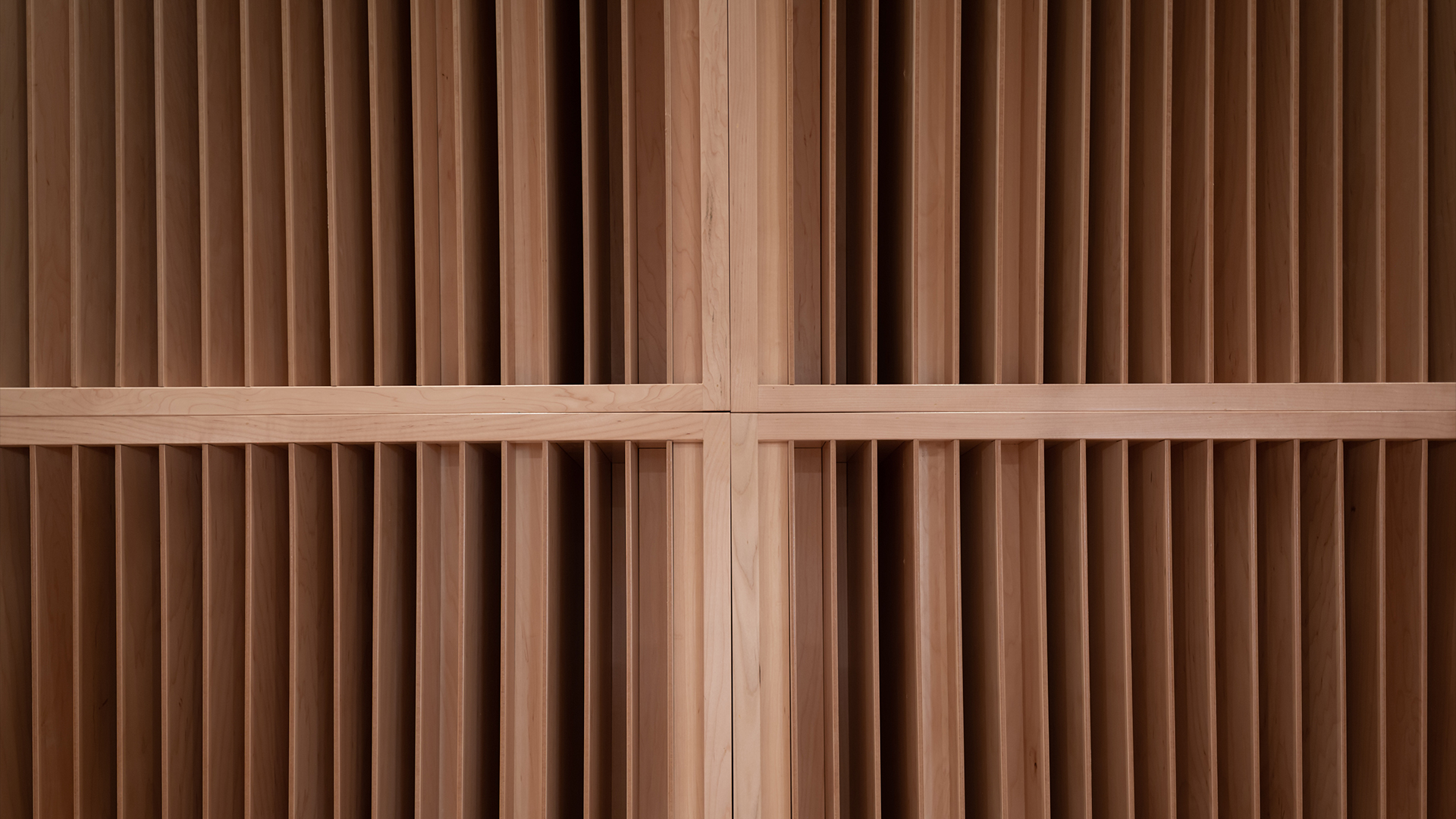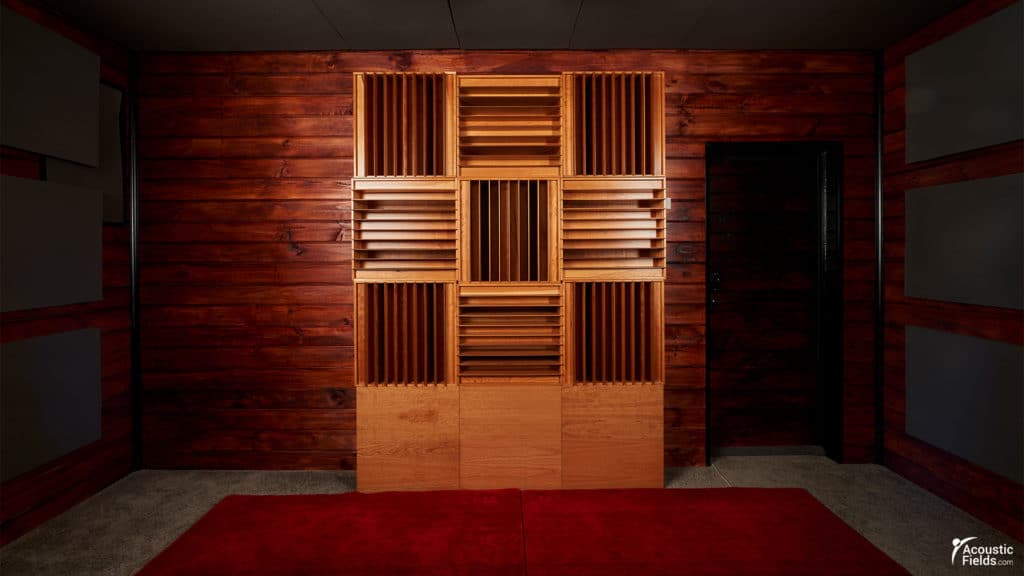
Table of Contents
Introduction
The search term audio diffuser is not an accurate search term. Like so many terms within acoustics, it is fraught with confusion. There is technically no such thing as an audio diffuser. There are types of sound diffusers but none that are called audio diffusers. Using the search term audio diffuser contributes to the overall confusion in the science of acoustics.
Let’s examine what a true sound diffuser is and how it works. Once we have an understanding of what a sound diffuser does and what it is used for, we will no longer need to use terms like audio diffuser and will understand sound diffusers and their applications in acoustics. A diffuser is a tool that is designed to make a small room sound larger. Of all the claims out there, there is only one true audio diffuser. It is called a quadratic diffuser. A quadratic diffuser is a scientifically calculated tool to make a small room sound larger.
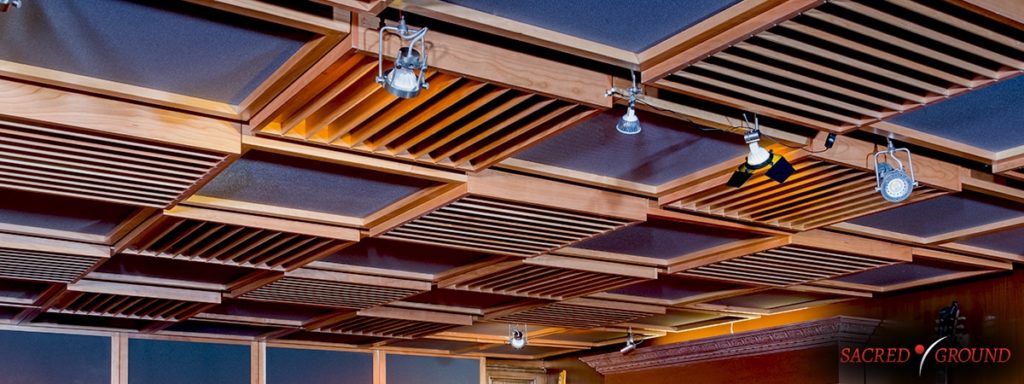
Prime Number-Based Quadratic Diffusers
A quadratic diffuser is a series of wells or troughs that are calculated to achieve a frequency response to match the diffusion usage. Each well depth in the diffusion sequence is calculated using a prime number as your start point with the modulus formula. Each well depth diffuses energy at a quarter wavelength. The well width is used at a half wavelength rule. In summary, the well depth works at quarter wavelength and the well width works at half wavelength.
Both the depth and width of each well contribute to the overall frequency response of the prime number chosen. Prime numbers are 7,11,13,17,19, and 23. The higher the prime number, the lower in frequency the diffuser will begin to work at. Quadratic diffusers are also distance dependent. You must have enough distance between the diffuser and the receiver in order for the lowest octave band frequency to fully form before it reaches the listener’s ears.
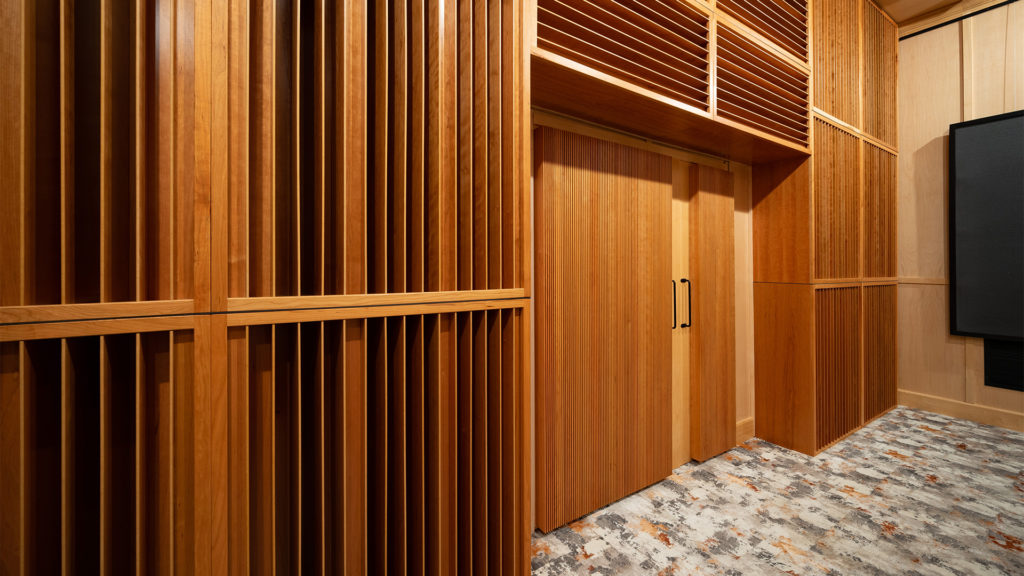
Minimizing Reflections with Quadratic Diffusers
Quadratic diffusers are a tool to reduce the impact of reflections. Reflections from our room boundary surfaces are clues for our hearing system that allow us to localize distance. We know we are in a small room because of the reflections from the wall surfaces. A diffuser is a tool to minimize the impact of reflections which in turn minimizes our brain’s ability to localize distance.
If our brains can not local distance, the perception of distance to walls is interrupted. Our brains think we are in a larger room. Small rooms are notorious for a small room sound. You hear this with a voice recorded in closets. Small rooms produce large amounts of reflections. Reflections are sometimes wanted but in most cases and room usages, they are a form of distortion that interferes with the direct energy from our music and voice sources.
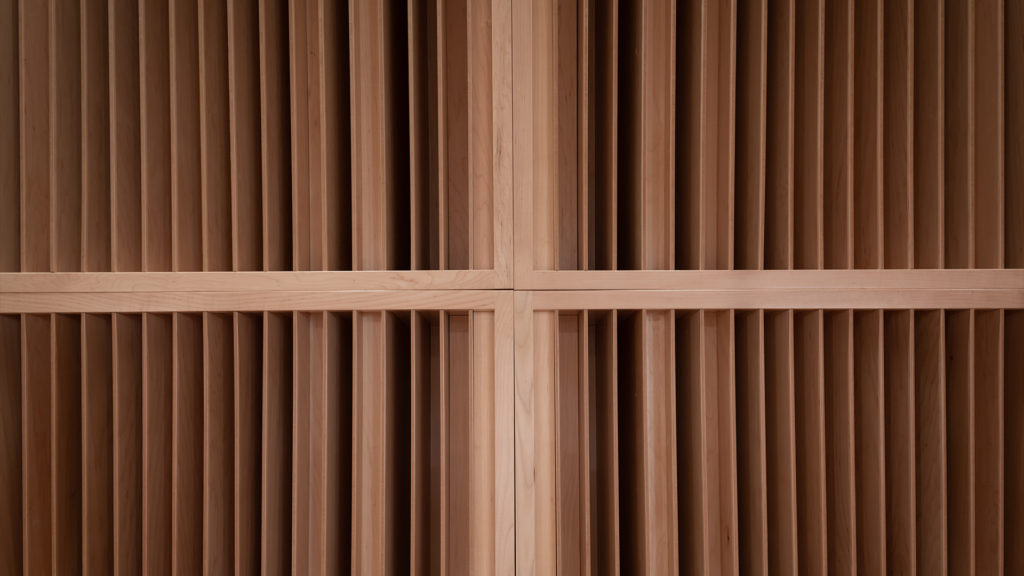
Pressure, Reflections, and Room Modes
Every room produces its own sound through the use of pressure and reflections. Pressure is low frequency energy that will not fit within the room dimensions. A 40 hz. wavelength is 28′. How many rooms have a 28′ dimension to deal with this long wavelength. The room dimensions can not handle this wavelength. When the energy will not fit into the room dimensions, it causes the air between the four walls, floor, and ceiling to vibrate.
When the air begins to vibrate, it produces room modes. Room modes can exaggerate certain frequencies and octave bands. Bass boom is a good example of this form of distortion. Room modes also can attenuate or suppress certain octave bands where you can not hear anything in that frequency or octave band.
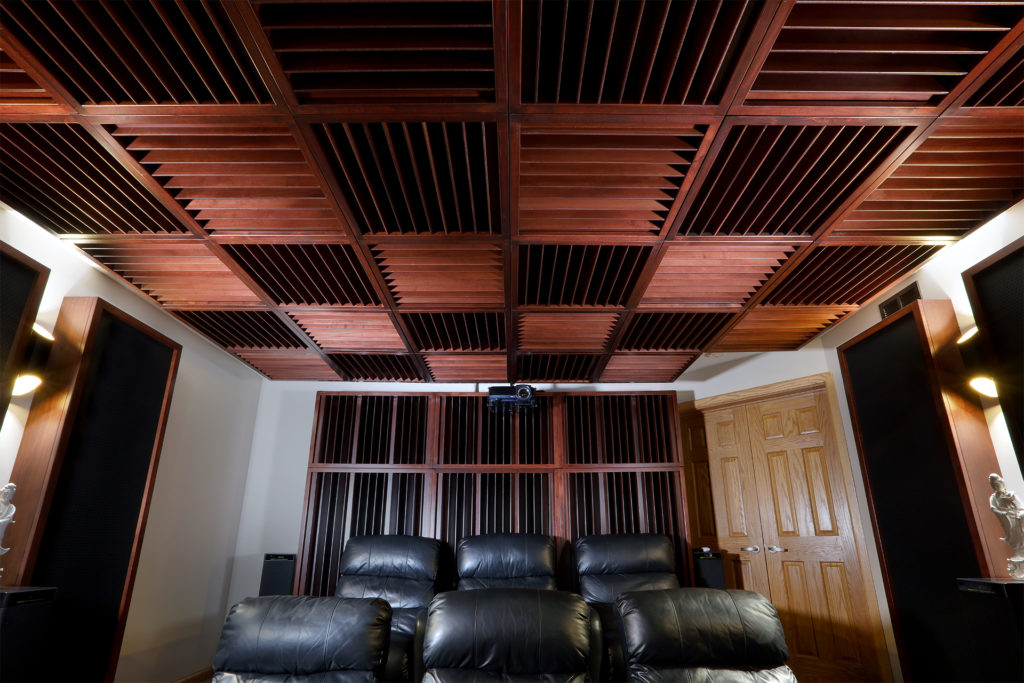
Balancing Sound Quality: Direct vs Reflected Energy with Diffusion
The total sound quality you achieve in a room is a balance between direct and reflected energy. The direct energy is the straight line energy from our music sources. Our sources can be a speaker or a live performance. The direct sound is the straight line energy from any music source. It is the purest sound we can receive in our ears since it travels straight from the source to our ears.
The direct sound after it strikes our ears, goes to the room walls, floor, and ceiling. When it strikes the room boundary surfaces, it produces reflections which then interfere with the direct or purer form of energy from our sources. The overall sound quality is always a balance of direct versus reflected energies. Diffusion can be used to reduce the impact of the room boundary reflections.
FAQs
What is quadratic sound diffusion?
Quadratic sound diffusion refers to a technique used in acoustic engineering to evenly distribute sound energy throughout a space, resulting in a more balanced and immersive listening experience. It involves the use of specialized diffusers that scatter sound waves in a controlled manner, minimizing echoes and reflections.
How does quadratic sound diffusion work?
Quadratic sound diffusion works by employing diffuser panels or devices strategically placed in a room. These diffusers are designed with specific geometric patterns and surface irregularities to scatter sound waves in multiple directions, breaking up direct reflections and reducing acoustic anomalies. This diffusion process helps create a more uniform sound field and enhances the overall listening environment.
What are the benefits of quadratic sound diffusion?
Quadratic sound diffusion offers several benefits. Firstly, it improves sound quality by reducing standing waves, echoes, and flutter echoes, resulting in a clearer and more intelligible audio experience. Additionally, it enhances the sense of spaciousness and envelopment, making the sound more immersive and natural. Moreover, quadratic sound diffusion can contribute to better speech intelligibility and improved acoustic performance in various settings, such as concert halls, recording studios, home theaters, and conference rooms.
How can quadratic sound diffusion be implemented in a room?
Implementing quadratic sound diffusion involves selecting and positioning diffuser panels strategically within a room. The exact placement and arrangement of diffusers depend on factors like room dimensions, listening position, and specific acoustic goals. Professional acoustic consultants or engineers can analyze the room acoustics, calculate diffusion requirements, and recommend appropriate diffuser types and configurations to achieve optimal sound diffusion.


